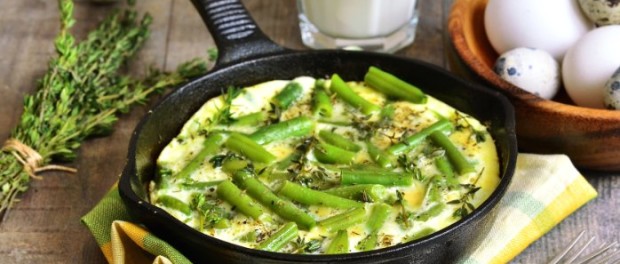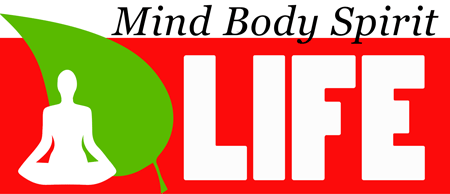The Anti-Cancer Diet

Cancer lies dormant in all of us. Like all living organisms, our bodies are making defective cells all the time. That’s how tumours are born. But our bodies are also equipped with a number of mechanisms which detect and keep such cells in check. In the West, one person in four will die of cancer – but three in four will not: their defence mechanisms will hold out.
It must be stated at the outset that there is no alternative approach to cancer that can cure the illness. It would be madness not to use the best of conventional Western medicine such as surgery, chemotherapy, radiotherapy and immunotherapy. But at the same time it is also unreasonable to rely only on these more technical approaches and to neglect the natural capacity of our bodies to protect against tumours, when so much research now points to ways in which we can reduce the risk of developing or dying from the disease. It’s a myth that cancer is transmitted primarily through genes. Genetic factors contribute at most to 15 per cent of cancer mortalities.
Cancer cells do not behave like normal cells. They refuse to die after a certain number of divisions, and they poison the tissues around them with chemical substances, creating inflammation, which they need to sustain their growth. Recent research reviewed in the journal Science confirms that the more successful cancers are in provoking inflammation, the more aggressive the tumour and the better it is at spreading over long distances, ultimately reaching lymph nodes and spreading to other organs. Links have been found between several types of cancer and chronic inflammation caused by either a virus such as papillomavirus in the cervix or environmental factors such as asbestos or smoking. Oncologists at the University of Glasgow have been measuring inflammation levels in the blood of patients with various cancers since the 1990s and have found that patients with the lowest levels of inflammation were twice as likely as the others to live for several years.
The pharmaceutical industry is looking for drugs that will inhibit the chemical secreted by cancer cells which causes inflammation. But there are already a number of natural ways we can boost our immunity and reduce inflammation to help keep those cancer cells in check. It’s simply a matter of eliminating certain toxins from our environment, adopting an anti-cancer diet, seeking emotional balance and taking enough exercise.
Environmental links
Cancer has been increasing in the West since 1940. Three major factors have drastically disrupted our environment over the same period — the addition of large quantities of highly refined sugar to our diet, changes in farming methods and exposure to a large number of chemical products that didn’t exist before the Second World War. There is every reason to believe that these three phenomena play a major role in the spread of cancer.
The dangers of sugar
Cancer feeds on sugar. The German biologist Otto Heinrich Warburg won a Nobel Prize for his discovery that the metabolism of malignant tumours is largely dependent on glucose consumption. Insulin production triggers inflammation. Those who eat low-sugar Asian diets tend to have five to ten times fewer hormonally driven cancers than those with diets high in sugar and refined foods. People who want to protect themselves from cancer should reduce their consumption of processed sugar and bleached flour. That means getting used to drinking coffee without sugar, avoiding sugary snacks between meals and cutting down on puddings.
Intensive farming
When cows eat grass, their meat and dairy products are perfectly balanced in omega-3 fatty acids (which help to reduce inflammation and cancer cell growth) and omega-6s. But since the 1950s, pastures have been replaced by battery farming; corn, soy and wheat have become the animals’ principal diet. These food sources are rich in omega-6s and contain practically no omega-3s. Omega-6 fats and hormones given to stimulate milk production can trigger the growth of fatty cells and inflammation. The switch from grass to corn-soy combinations has also eliminated another anti-cancer benefit from dairy foods. Conjugated linoleic acid (CLA) helps fight the growth of cancer cells, according to research conducted by the National Institute of Agronomy Research in Tours, France. CLA is found primarily in cheese, but only if the cheese comes from grass-fed animals.
Toxins in the environment
There has been an unprecedented rise in the number of toxic substances in our environment and in our bodies since the Second World War. In the US, researchers at the Center for Disease Control have found the presence of 148 toxic chemicals in the blood and urine of Americans of all ages. In the past 30 years the World Health Organisation’s International Agency for Research on Cancer has tested 900 chemicals in the environment and found only one to be categorically non-carcinogenic; 95 have been identified as ‘known carcinogens’, 307 are ‘possible’ and 497 remain ‘unclassified’. Many of these substances continue to be widely used, such as benzene, which is found in petrol, certain plastics, glues, lubricants, dyes and detergents.
The organic advantage
At the University of Washington a young researcher, Cynthia Curl, questioned whether the organic food her friends gave their children was really healthier. She organised a study of 42 children aged two to five in which the parents had to write down exactly what the children ate for three days before she measured the traces of organochlorine pesticides in their urine. She found those whose diet was approximately 75 per cent labelled organic was distinctly below the minimum fixed by the Environmental Protection Agency. Levels found in children on conventional diets were four times higher than the official safety limit. A subsequent study conducted at the same university of 23 children, who were first fed a conventional diet and then ate nothing but organic foods, found that all traces of pesticides vanished from their urine after a few days and then returned once they resumed a conventional diet.
Inflammation aggravators (which can lead to cancer)
- Traditional Western diet
- White bread and pasta
- Red meat, raised industrially
- Oils rich in omega-6 fatty acids (corn, sunflower, safflower, soy)
- Dairy products from industrially raised livestock (especially full fat)
- Eggs from industrial farming hens fed corn and soy beans)
- Unmanaged stress, anger and depression
- Less than 20 minutes of physical activity a day
- Cigarette smoke, atmospheric pollution, domestic pollutants
Inflammation reducers
- Mediterranean, Indian and Asian cuisine
- Wholewheat bread and pasta
- Organic meat from animals fed on grass or with flaxmeal, eaten at most three times a week
- Olive oil
- Dairy products mainly from animals fed on grass
- Eggs of hens raised in a natural environment or fed flaxmeal
- Laughter, lightheartedness, serenity
- A 50-minute walk three times a week or 30 minutes six times a week
- Clean environment
 Cancer-fighting Superfoods
Cancer-fighting Superfoods
Some foods contain precious anti-cancer molecules. These include:
GREEN TEA
Rich in polyphenols that reduce the growth of the new blood vessels needed for tumour growth, green tea is also a powerful antioxidant and activates mechanisms in the liver which help to eliminate cancerous toxins from the body more rapidly. In mice it has been shown to block the effects of chemical carcinogens responsible for breast, lung, oesophageal, stomach and colon cancer.
TURMERIC
 The most powerful natural anti-inflammatory identified today. In the laboratory it enhances the effectiveness of chemotherapy and reduces tumour growth. To be assimilated by the body tumeric needs to be mixed with black pepper and, ideally, it should be dissolved in oil.
The most powerful natural anti-inflammatory identified today. In the laboratory it enhances the effectiveness of chemotherapy and reduces tumour growth. To be assimilated by the body tumeric needs to be mixed with black pepper and, ideally, it should be dissolved in oil.
GARLIC, ONIONS, LEEKS, SHALLOTS and CHIVES
These all help to regulate blood sugar levels, which in turn reduces insulin secretion and thus the growth of cancer cells. They promote the death of cancer cells in colon, breast, lung and prostate cancer.
MUSHROOMS
Shiitake, crimini, portabello and oyster mushrooms stimulate the reproduction and activity of immune cells. They are often used in Japan as a complement to chemotherapy to support the immune system.
CRUCIFEROUS VEGETABLES
 Cabbages, sprouts, broccoli and cauliflower contain powerful anti-cancer molecules. But boiling will destroy them — steam briefly or stir-fry rapidly in a little olive oil.
Cabbages, sprouts, broccoli and cauliflower contain powerful anti-cancer molecules. But boiling will destroy them — steam briefly or stir-fry rapidly in a little olive oil.
FRUITS AND VEGETABLES RICH IN CAROTENOIDS
Carrots, yams, sweet potatoes, squash, tomatoes, apricots, beets and all the brightly coloured fruits and vegetables contain vitamin A and lycopene, which have the proven capacity to inhibit the growth of particularly aggressive cancers.
HERBS AND SPICES
 Rosemary, thyme, oregano, basil and mint are rich in essential oils of the tarpene family which reduce the spread of cancer cells by blocking the enzymes they need to invade neighbouring tissues.
Rosemary, thyme, oregano, basil and mint are rich in essential oils of the tarpene family which reduce the spread of cancer cells by blocking the enzymes they need to invade neighbouring tissues.
CITRUS FRUIT
Oranges, tangerines, lemons and grapefruit contain anti-infammatory flavonoids which are also present in the skin. So buy organic, unwaxed citrus fruit and add the zest to salad dressing or steep the skins in hot water or tea.
The Mind-Body Connection
It usually takes anywhere from ten to 40 years for the ‘seed’ of cancer in the form of a cellular anomaly to become a detectable cancerous tumour. No psychological factor has been identified as being capable of creating that cancer seed. However, stress profoundly influences the soil in which that seed develops. Stress causes the release of hormones which trigger inflammation and slows down digestion, tissue repair and the immune system. A study of more than 10,000 women at the University of Helsinki in Finland has shown that the loss of an important emotional relationship doubles the risk of breast cancer.
The factors contributing to cancer are so varied that no one should blame themselves for developing the disease. But anyone who has been diagnosed with cancer can learn to live differently. Health does not depend on any one organ or function but on relations between them. Everyone can learn how to foster that balance. All of the great medical and spiritual traditions in the East – yoga, meditation, t’ai chi, qigong – teach people how to take over the reins of their inner being, concentrating the mind and focusing on the breath. This mastery is one of the best ways to reduce the impact of stress and helps re-establish harmony in a person’s physiology and stimulate the body’s natural defences.
The body is a huge system in equilibrium. Alter just one thing – diet, exercise, stress – and the whole is affected. Each small step we take makes the next one seem easier – we can lose the taste for an unbalanced diet or smoking or alcohol because we are more able to detect its impact on our wellbeing.
 Check out Emma’s latest book:
Check out Emma’s latest book:
800 Calorie Fasting:
The Healthy Guide to Intermittent Fasting
By Emma Olliff, Maria Mitchell
To discuss your individual nutritional needs please contact the Registered Nutritionist Emma Olliff.



